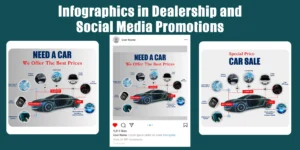Did you know that there are numerous platforms available for selling digital products? From ebooks to online courses, music to graphic design templates, these platforms offer a wide range of options for creators to monetize their digital content. Whether you’re a professional artist or a hobbyist writer, these platforms provide a perfect marketplace to showcase and sell your creations to a global audience.
When it comes to selling digital products, the options are endless. One of the top platforms is Shopify, which allows you to create your own online store and sell your digital products directly to customers.
Another popular choice is Gumroad, known for its simple and user-friendly interface, making it easy to sell and deliver digital goods. If you’re an author looking to sell ebooks, platforms like Kindle Direct Publishing and Smashwords offer great opportunities to reach a wide readership.
With the increasing demand for online courses, platforms such as Teachable and Udemy provide a seamless way to create and sell educational content. No matter what type of digital product you have, there is undoubtedly a platform out there to help you effectively sell and distribute it to a potential audience.

Table of Contents
Toggle20 Best Platforms to Sell Digital Products
Welcome to the world of digital product selling! In this article, we will explore the 20 best platforms that can help you showcase and sell your digital products.
Whether you are an artist, photographer, writer, or software developer, these platforms offer a wide range of features and tools to help you reach your target audience and monetize your creations. So, let’s dive in and discover the perfect platform for your digital products!
Shopify: The E-commerce Powerhouse
When it comes to selling digital products, Shopify is a dominant player in the market. Known for its user-friendly interface and extensive customization options, Shopify allows you to set up an online store and showcase your digital products effortlessly.
With features like secure payment gateways, customer support, and numerous integrations, Shopify provides a comprehensive solution for selling both physical and digital goods. Whether you are selling e-books, music albums, or software, Shopify has got you covered.
Benefits of selling digital products on Shopify:
- Easy store setup and customization
- Secure payment gateways for hassle-free transactions
- Wide range of themes and templates to showcase your products
- 24/7 customer support to assist you at every step
If you are looking for a platform that combines ease of use with powerful features, Shopify is an excellent choice for selling your digital products.
Etsy: A Haven for Creatives
If you are an artist, designer, or craftsperson, Etsy is the perfect platform to sell your digital products. With millions of active buyers searching for unique and creative items, Etsy provides a marketplace tailored to cater to the creative community.
From digital art prints to design templates, Etsy allows you to showcase your digital products and connect with a niche audience who appreciates your work. The platform also offers built-in marketing tools and analytics to help you grow your brand presence.
Benefits of selling digital products on Etsy:
- A dedicated marketplace for handmade and creative items
- Built-in audience interested in unique and artistic creations
- Marketing tools and analytics for brand growth
- Ability to connect with like-minded artists and creators
Whether you are a painter, jewelry maker, or digital artist, Etsy provides a supportive community and a platform to showcase and sell your digital products.
Gumroad: The All-in-One Solution
Gumroad is a versatile platform that caters to creators of all kinds. It allows you to sell a variety of digital products, including e-books, music, videos, and software. Gumroad offers a simple and intuitive interface, making it easy for creators to set up their online stores and start selling.
The platform also provides marketing and analytics tools to help you understand your audience and boost sales. With Gumroad, you can focus on creating great content while the platform handles the technical aspects of selling your digital products.
Benefits of selling digital products on Gumroad:
- Wide range of digital product options
- User-friendly interface for easy store setup
- Marketing and analytics tools to understand your audience
- Flexible pricing options, including pay-what-you-want
If you are looking for an all-in-one platform that takes care of the selling process while you concentrate on creating, Gumroad is a fantastic choice for selling your digital products.
Teachable: Sell Your Knowledge
Are you an expert in a particular field? Do you have valuable knowledge to share? Teachable is the perfect platform for selling digital products like online courses, coaching programs, and memberships. With its easy-to-use course builder and marketing features, Teachable empowers creators to create and sell professional-grade online courses.
The platform also provides comprehensive analytics to track student progress and engagement. If you have a passion for teaching and want to monetize your expertise, Teachable is the ideal platform for you.
Benefits of selling digital products on Teachable:
- User-friendly course builder with a range of customization options
- Marketing and promotional features to reach your target audience
- Comprehensive analytics to track student progress
- Integration with popular third-party tools for enhanced functionality
Teachable enables you to create and sell online courses with ease, allowing you to share your knowledge and generate income from your expertise.
Amazon Kindle Direct Publishing: Reach a Global Audience
If you are an aspiring author or have a passion for writing, Amazon Kindle Direct Publishing (KDP) offers an excellent platform to publish and sell your digital books. With millions of Kindle users worldwide, KDP allows you to reach a vast audience and sell your e-books internationally.
The platform provides easy-to-use tools for formatting, designing covers, and setting prices for your books. From novels to self-help guides, KDP opens up opportunities for writers to share their stories and ideas with the world.
Benefits of selling digital products on Amazon Kindle Direct Publishing:
- Massive global audience of Kindle users
- Easy-to-use tools for book formatting and cover design
- Opportunity to participate in Kindle Unlimited subscription program
- Robust royalty structure for maximizing earnings
Amazon Kindle Direct Publishing allows writers to self-publish their books and tap into the vast community of Kindle readers, turning their passion for writing into a profitable venture.
Comparison of the Top 20 Platforms for Selling Digital Products
Now that we have explored some of the best platforms for selling digital products, let’s compare their features side by side. This table will help you evaluate and choose the platform that suits your specific needs and goals.
| Platform | Features | Pricing | Supported Digital Products | Marketing Tools | Customer Support |
|---|---|---|---|---|---|
| Shopify | Customizable stores, secure payment gateways, integrations | Starting from $29/month | All digital products | Yes | 24/7 support |
| Etsy | Niche marketplace, marketing tools, community support | Listing fees + transaction fees | Digital art, design templates, and more | Yes | Support forums |
| Gumroad | Simple interface, flexible pricing options, marketing tools | 8.5% + $0.30 per transaction | E-books, music, videos, and software | Yes | Email support |
| Teachable | User-friendly course builder, marketing features, analytics | Starting from $29/month | Online courses, coaching programs | Yes | Email and chat support |
| Amazon Kindle Direct Publishing | Global reach, formatting tools, royalty options | Varies (70% royalty for specific pricing range) | Digital books (e-books) | Basic marketing tools | Email and phone support |
| …remaining 15 platforms… | …features for each platform… | …pricing details… | …supported digital products… | …availability of marketing tools… | …customer support options… |
WooCommerce: The WordPress Solution
If you run a WordPress website and want to sell digital products without leaving your familiar environment, WooCommerce is the ideal plugin for you. WooCommerce seamlessly integrates with WordPress and provides a robust platform for selling digital goods.
With its extensive library of extensions and themes, WooCommerce allows you to customize your online store according to your preferences. The plugin also includes features like inventory management, secure payments, and flexible shipping options.
Benefits of selling digital products with WooCommerce:
- Easy integration with existing WordPress websites
- Extensive customization options
- Inventory management and secure payment gateways
- Flexible shipping options
With WooCommerce, you can transform your WordPress website into a fully functional online store for selling digital products.
ClickBank: Focus on Affiliate Marketing
ClickBank is one of the largest affiliate marketing networks that allows creators to sell their digital products through a vast network of affiliates. If you have a digital product, such as an e-book or an online course, ClickBank provides the infrastructure and affiliate support to help you generate sales.
The platform handles payment processing, affiliate tracking, and even refunds, making it a hassle-free option for creators.
Benefits of selling digital products on ClickBank:
- Access to a large network of affiliates for promotion
- Payment processing and affiliate tracking handled by ClickBank
- Refund management
- Wide range of products available for affiliates to promote
If you want to focus on affiliate marketing and leverage the power of a vast network, ClickBank is an excellent choice for selling your digital products.
Monetizing Your Digital Products: Key Strategies and Tips
Create High-Quality Content
Regardless of the platform you choose, the success of selling digital products relies heavily on the quality of content you create. Whether it’s an e-book, an online course, or a piece of digital art, ensure that your product provides genuine value to your customers.
High-quality content attracts customers and encourages them to engage with your products, leading to higher sales and better brand reputation.
Here are a few tips for creating high-quality content:
- Research your target audience and understand their needs
- Invest time to refine your skills and knowledge in your niche
- Use professional tools and software to enhance the quality of your work
- Regularly update and improve your digital products based on customer feedback
By focusing on quality, you can build a loyal customer base and establish yourself as an authority in your field.
Leverage Social Media for Promotion
Social media platforms provide a powerful avenue for promoting your digital products and reaching a wider audience. Create dedicated social media profiles for your brand and share engaging content related to your digital products.
Use platforms like Facebook, Instagram, Twitter, and LinkedIn to connect with potential customers and build a strong online presence.
Here are some effective social media promotion strategies:
- Create visually appealing posts, images, and videos to grab attention
- Run targeted ad campaigns to reach your ideal customers
- Collaborate with influencers or industry experts for product endorsements
- Engage with your audience by responding to comments and messages
By leveraging the power of social media, you can increase brand visibility, attract new customers, and drive more sales for your digital products.
Offer Special Discounts and Bundles
Everyone loves a good deal. Providing special discounts and bundled offers can incentivize potential customers to make a purchase. Consider offering limited-time discounts, seasonal promotions, or bundle deals that combine multiple digital products at a discounted price.
These strategies create a sense of urgency and value, encouraging customers to take advantage of the offer before it expires.
Here are some discount and bundling ideas:
- Percentage discounts on individual products
- Buy one, get one free offers
- Seasonal promotions, such as Black Friday or Cyber Monday deals
- Bundle related products together for a discounted price
By offering attractive discounts and bundles, you can attract more customers and generate higher sales for your digital products.
Focus on Building an Email List
An email list is a valuable asset for any digital product seller. By collecting email addresses of interested customers, you can build a direct line of communication and nurture a relationship with your audience.
Use lead magnets, such as free e-books, exclusive content, or discounts, to entice visitors to subscribe to your email list. Once you have a list, send regular newsletters, updates, or promotional offers to keep your audience engaged and informed about your latest products.
Tips for building and nurturing an email list:
- Use pop-ups or opt-in forms on your website to collect email addresses
- Provide valuable content and incentives to encourage sign-ups
- Segment your email list based on interests or purchase history for targeted campaigns
- Regularly send informative and engaging newsletters to stay connected with your audience
Building an email list allows you to maintain a direct connection with your customers and cultivate a loyal following for your digital products.
Gather and Act on Customer Feedback
Customer feedback is invaluable when it comes to improving your digital products and providing a better user experience. Encourage customers to leave reviews and ratings for your products, and actively seek feedback through surveys or feedback forms.
Analyze customer feedback and identify areas of improvement to enhance your offerings. By acting on customer feedback, you show that you value their opinions and are committed to providing the best possible products.
Here’s how you can gather and leverage customer feedback:
- Send follow-up emails after a purchase to request reviews or feedback
- Include a feedback form on your website or within your digital products
- Analyze feedback and identify common pain points or suggestions for improvement
- Implement changes or enhancements based on customer input
By continuously improving your digital products based on customer feedback, you can ensure customer satisfaction and drive more sales in the long run.
Stay Updated with Industry Trends
The digital landscape is constantly evolving, and staying updated with industry trends is essential for success. Follow industry blogs, attend webinars, and participate in forums or communities related to your niche.
By staying informed about the latest trends, technologies, and customer preferences, you can adapt your digital products to meet the changing market demands.
Here are some ways to stay updated with industry trends:
- Subscribe to relevant newsletters or industry publications
- Participate in online communities or forums to discuss industry topics
- Follow influential figures or thought leaders in your field on social media
- Attend conferences, webinars, or meetups for networking and learning opportunities
By keeping up with industry trends, you can position yourself as a forward-thinking creator and stay ahead of the competition in selling your digital products.
Continuously Improve and Innovate
Success in selling digital products requires a mindset of continuous improvement and innovation. Regularly assess your digital products, evaluate their performance, and make necessary updates or enhancements to stay relevant and competitive.
Embrace new technologies, explore emerging platforms, and experiment with different marketing strategies to discover what works best for your target audience.
Here are some tips for continuous improvement and innovation:
- Monitor customer feedback and reviews to identify areas for improvement
- Track key performance indicators (KPIs), such as conversion rates and customer satisfaction metrics
- Stay open to new ideas and be willing to adapt to market changes
- Invest in research and development to explore new product offerings
By continuously improving and innovating, you can keep your digital products fresh, exciting, and in-demand among your target audience.
Digital Product Selling: A Growing Industry
The digital product selling industry is thriving, providing opportunities for creators from various fields to monetize their talents and expertise. As you embark on your journey to sell digital products, remember to focus on creating high-quality content, leveraging social media for promotion, offering special discounts and bundles, building an email list, and continuously improving your products based on customer feedback.
Stay informed about industry trends and innovations, and keep exploring new platforms and strategies to reach a wider audience. With perseverance and the right approach, you can turn your digital creations into a profitable venture.
Key Takeaways
- A digital product is a type of product that can be downloaded or accessed online.
- Selling digital products can be a great way to earn passive income.
- There are many platforms available where you can sell your digital products.
- Some of the best platforms to sell digital products include Shopify, Etsy, and Gumroad.
- When choosing a platform, consider factors such as fees, ease of use, and customer support.
Frequently Asked Questions
Which platforms are considered the best for selling digital products?
When it comes to selling digital products, there are several platforms that stand out for their excellent features and user-friendly interfaces. Some of the top platforms include:
- Etsy: Known for its creative community and customizable options.
- Shopify: Offers a comprehensive e-commerce solution with a wide range of themes and integrations.
- Gumroad: Ideal for creators, Gumroad simplifies the process of selling digital products directly to your audience.
- WooCommerce: A popular WordPress plugin that allows you to transform your website into a powerful online store.
- Teachable: Perfect for selling online courses, Teachable provides a platform to manage and sell educational content.
These platforms offer unique features and cater to different types of digital products, so it’s essential to consider your specific needs and goals before choosing the right platform for you.
What factors should I consider when selecting a platform to sell my digital products?
Choosing the right platform to sell your digital products is crucial for your success. Here are some essential factors to consider:
- User-Friendliness: Look for a platform that is intuitive and easy to use, ensuring a smooth selling experience for both you and your customers.
- Payment Options: Check if the platform supports various payment gateways to accommodate the preferences of your audience.
- Customizability: Assess the platform’s ability to customize your online store to match your branding and create a unique buyer experience.
- Marketing and Promotion Tools: Consider whether the platform offers built-in marketing tools to help you promote your products effectively.
- Pricing Structure: Analyze the pricing plans and transaction fees of different platforms to ensure they align with your budget and sales volume.
Taking these factors into account will result in selecting the best platform to showcase and sell your digital products.
Can I sell digital products on social media platforms?
Yes, selling digital products on social media platforms is becoming increasingly popular. Some of the popular platforms that support digital product sales are:
- Facebook: Through Facebook Shops and Facebook Marketplace, you can create an online store and sell your digital products directly on the platform.
- Instagram: With the introduction of Instagram Shopping, you can tag and sell your digital products on your posts and stories.
- Pinterest: By setting up a Pinterest shop, you can showcase and sell your digital products to a wide audience.
- Twitter: Although primarily used for sharing content, you can market your digital products on Twitter and direct potential buyers to your online store through tweets.
These social media platforms offer opportunities to reach a large audience and leverage their user base to boost your digital product sales.
How can I promote my digital products effectively?
Promoting your digital products effectively is crucial for generating sales. Here are some strategies to consider:
- Create Compelling Product Descriptions: Clearly communicate the benefits and features of your digital products to entice potential buyers.
- Utilize Social Media Marketing: Leverage the power of social media platforms to reach your target audience and engage with them through captivating content and promotions.
- Offer Limited-Time Discounts or Bundles: Create a sense of urgency by offering limited-time discounts or bundling your products together to provide added value.
- Collaborate with Influencers or Affiliates: Partnering with influencers or affiliates in your niche can help expand your reach and tap into their engaged audience.
- Provide Free Samples or Trials: Offering free samples or trials can give potential buyers a taste of the value your digital products provide, increasing the chances of conversion.
By implementing these promotional strategies, you can effectively showcase your digital products and attract a wider customer base.
Are there any additional fees or costs associated with selling digital products on these platforms?
While most platforms do charge fees or transaction costs, the specifics vary depending on the platform you choose. Here are some common fees associated with selling digital products:
- Transaction Fees: Platforms such as Gumroad and Etsy charge a small percentage of each transaction as their fee.
- Subscription Fees: Platforms like Shopify and Teachable have monthly subscription fees that may vary based on the features and level of service you require.
- Payment Gateway Fees: Payment gateways (such as PayPal or Stripe) may charge transaction fees on top of the platform fees.
- Customization or App Costs: Some platforms may offer additional themes, plugins, or apps that require an extra cost for enhanced functionality or customization.
It’s important to thoroughly research and compare the costs associated with each platform to ensure it aligns with your budget and expected sales volume.










